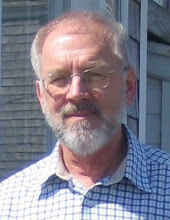As I started some heavy editing to chapter three of my biography of David Kokernot--a chapter I wrote almost four years ago--I grew wistful remembering the three months I spent researching in New Orleans. Chapter three (further described here) relates the happy years the Kokernot family spent in that city in the 1820s. I added these introductory paragraphs to the chapter:
When I arrived in New Orleans, the cab driver dropped me off after dark, and Karissa, my new landlady and self-described “Quarter Rat,” let me into my apartment. She knew, of course, she was dealing with a Yankee, but wanted, nevertheless, to help me avoid injury or embarrassment during my three month research visit to her beloved French Quarter. “Avoid these neighborhoods after dark,” she instructed, tracing them with her finger on the wall map. Her second lesson came as she pointed out the streets. “That’s BurGUNdy,” she said, naming the next cross street southeast of our Toulouse Street location. “Here is CON-tie.” She pointed at Conti Street. “Remember Calliope rhymes with ‘envelope’ and Esplanade with ‘cavalcade,’ Yankee.”
Soon after she left, a thunderous downpour drew me to the window overlooking Toulouse Street. Water cascaded from the rooftops and into the gutters, then ran uphill. After my session with Karissa, I knew exactly where I was and where the river was, and this water was not flowing in the correct direction. Later I learned that the peculiar hydraulics of the lower Mississippi creates a natural levee along its banks, with land sloping down and away from the river. New Orleanians incorporate this fact into their speech. For streets perpendicular to the river shore, like Toulouse, “up” is toward the river. “Down,” naturally, is toward Lake Pontchartrain, several feet below the level of the Mississippi at New Orleans. Likewise one needs to abandon concepts of north-south-east-west when following streets that parallel the curves of the river. Instead, use “uptown” and “downtown,” or “upriver” and “downriver” to understand directions from today or two centuries in the past.
Tuesday, September 1, 2009
Subscribe to:
Post Comments (Atom)





No comments:
Post a Comment